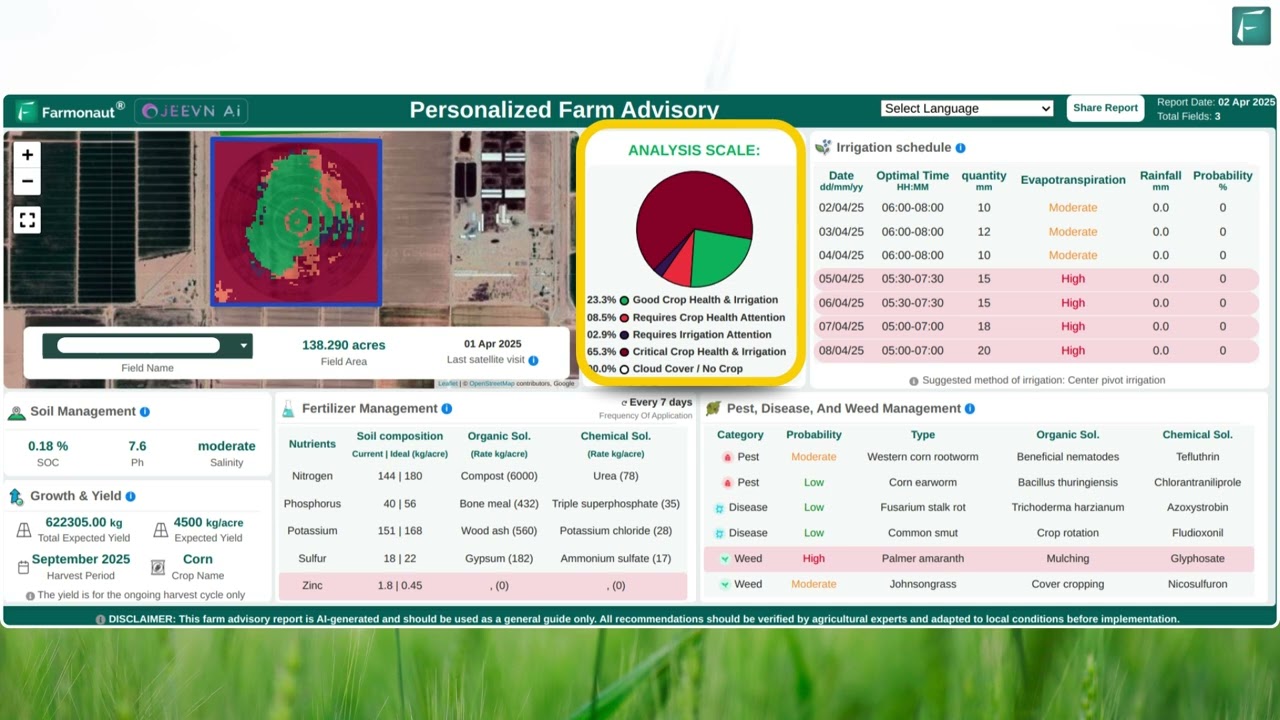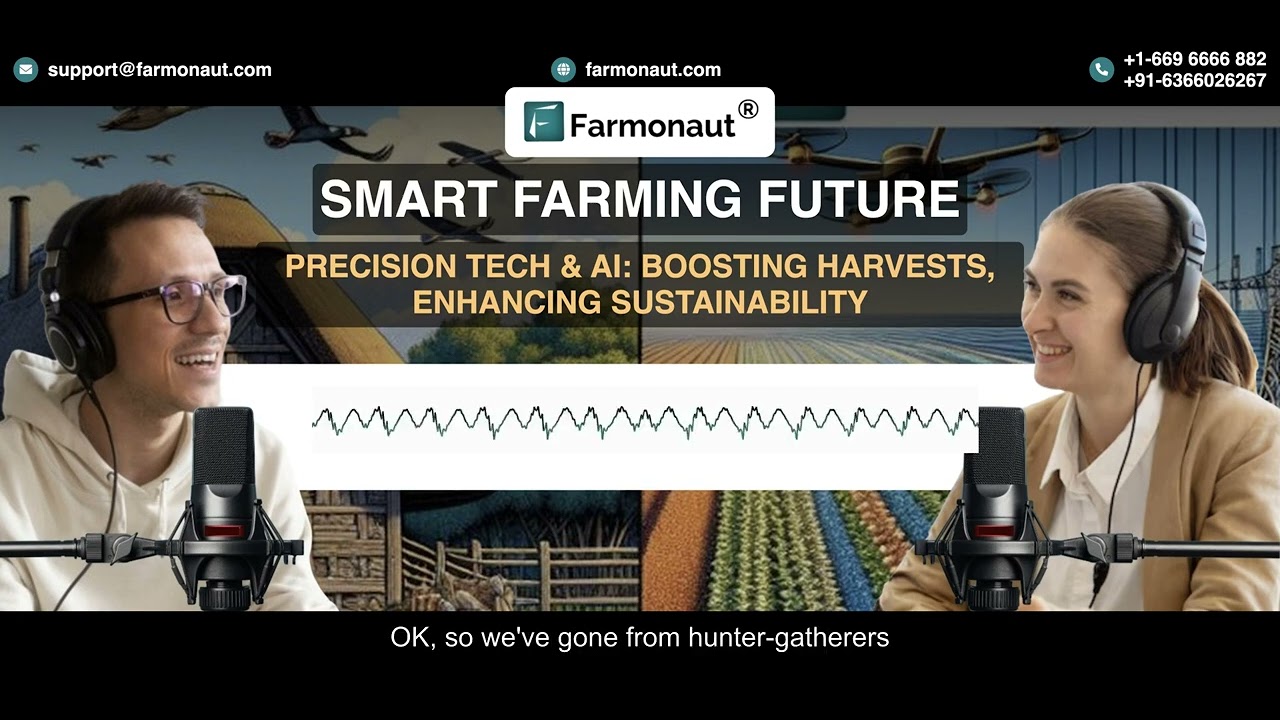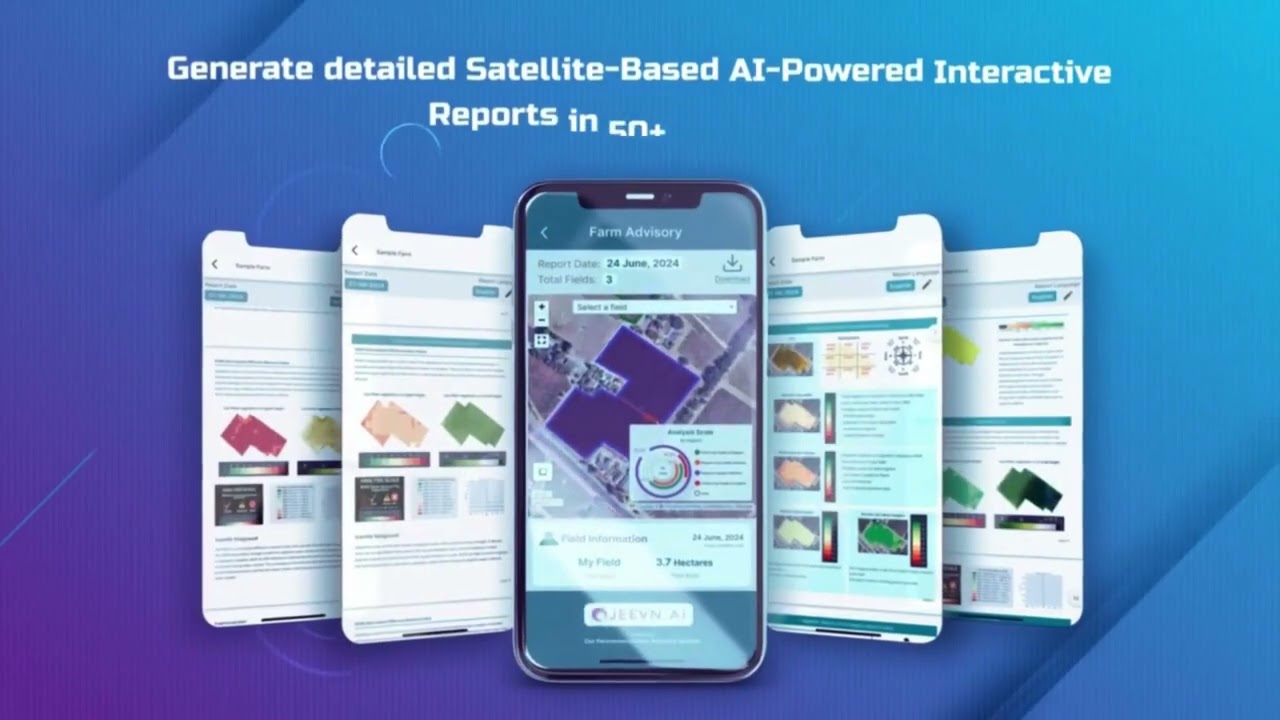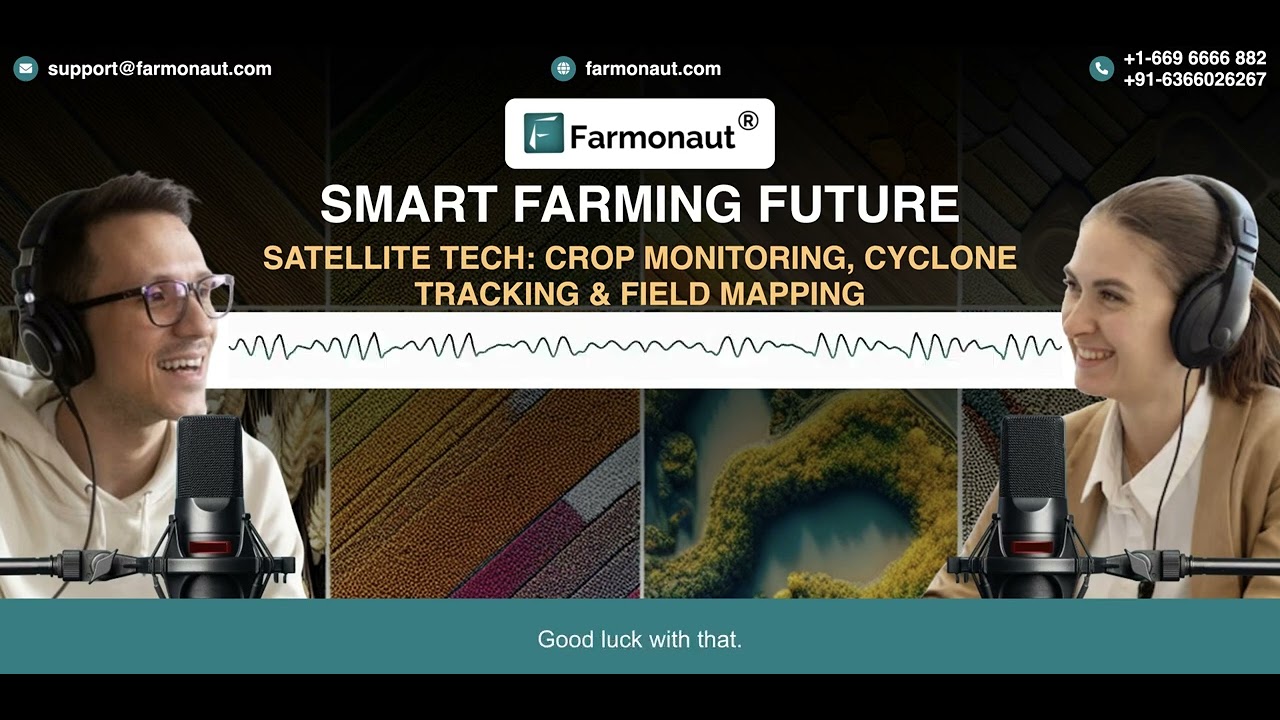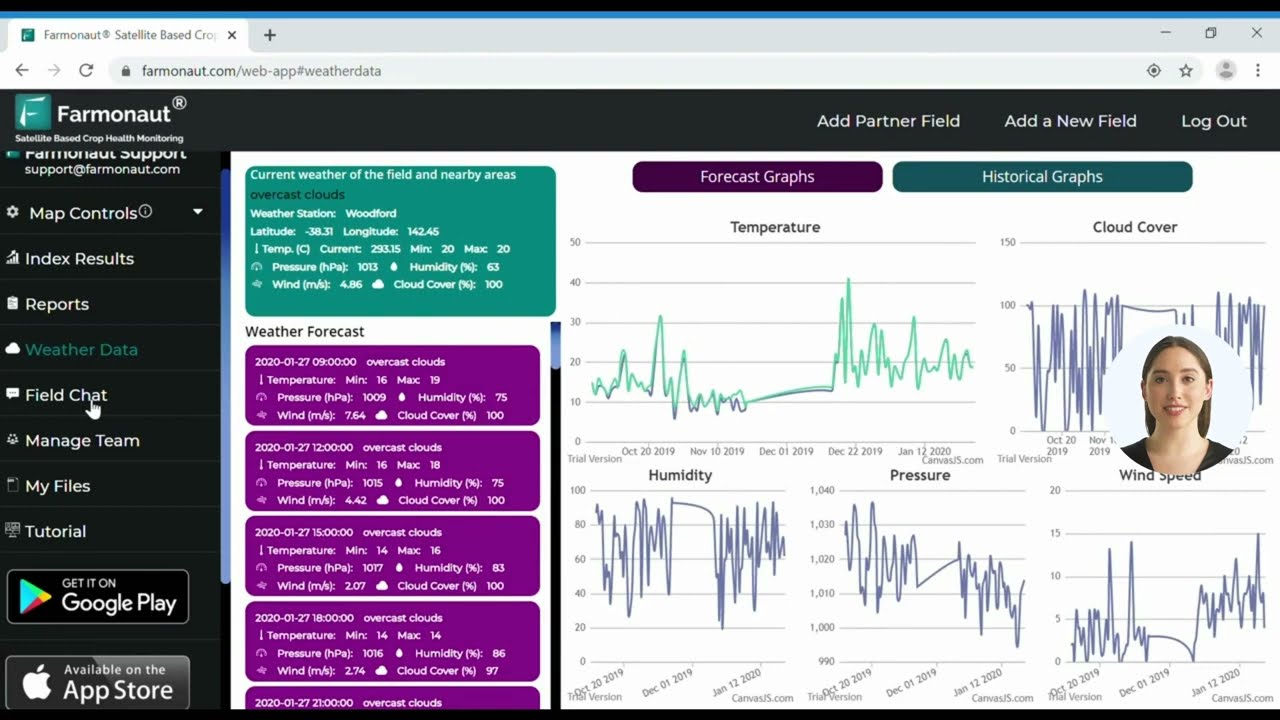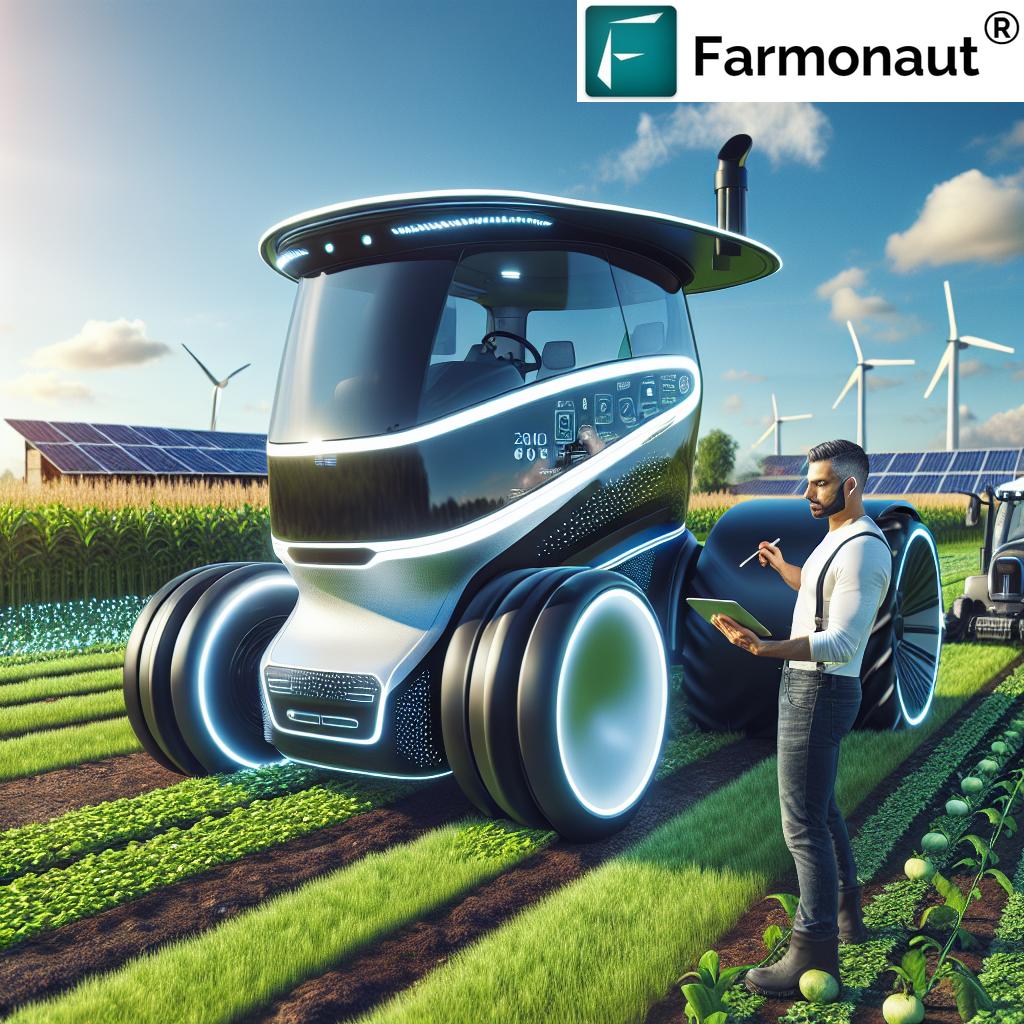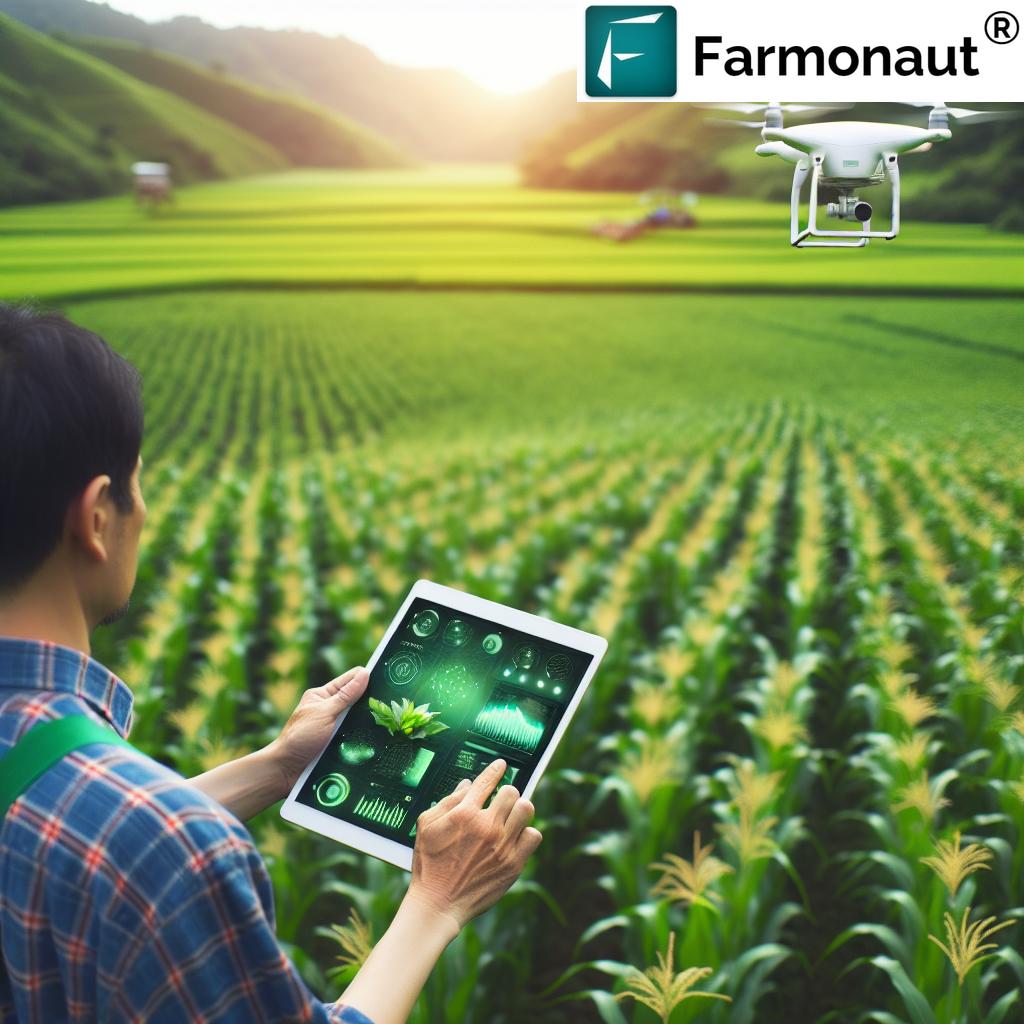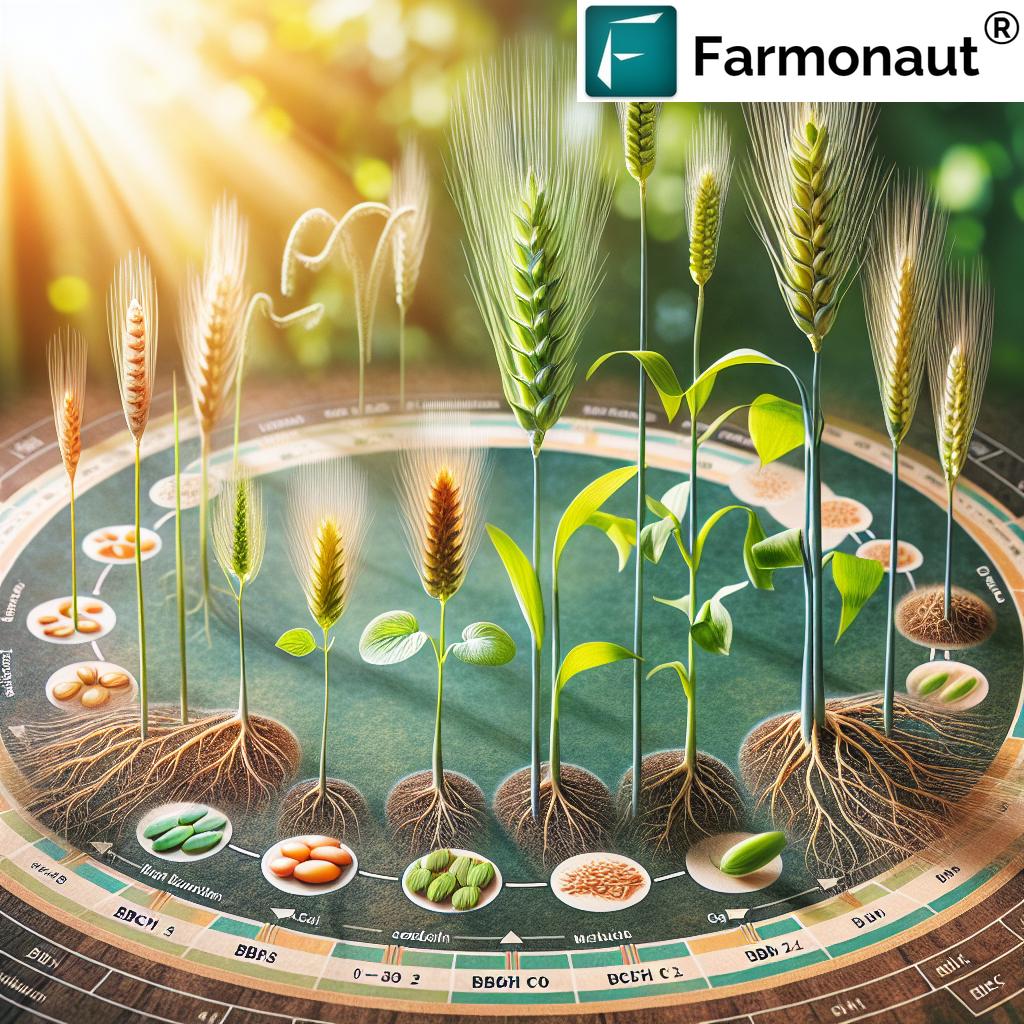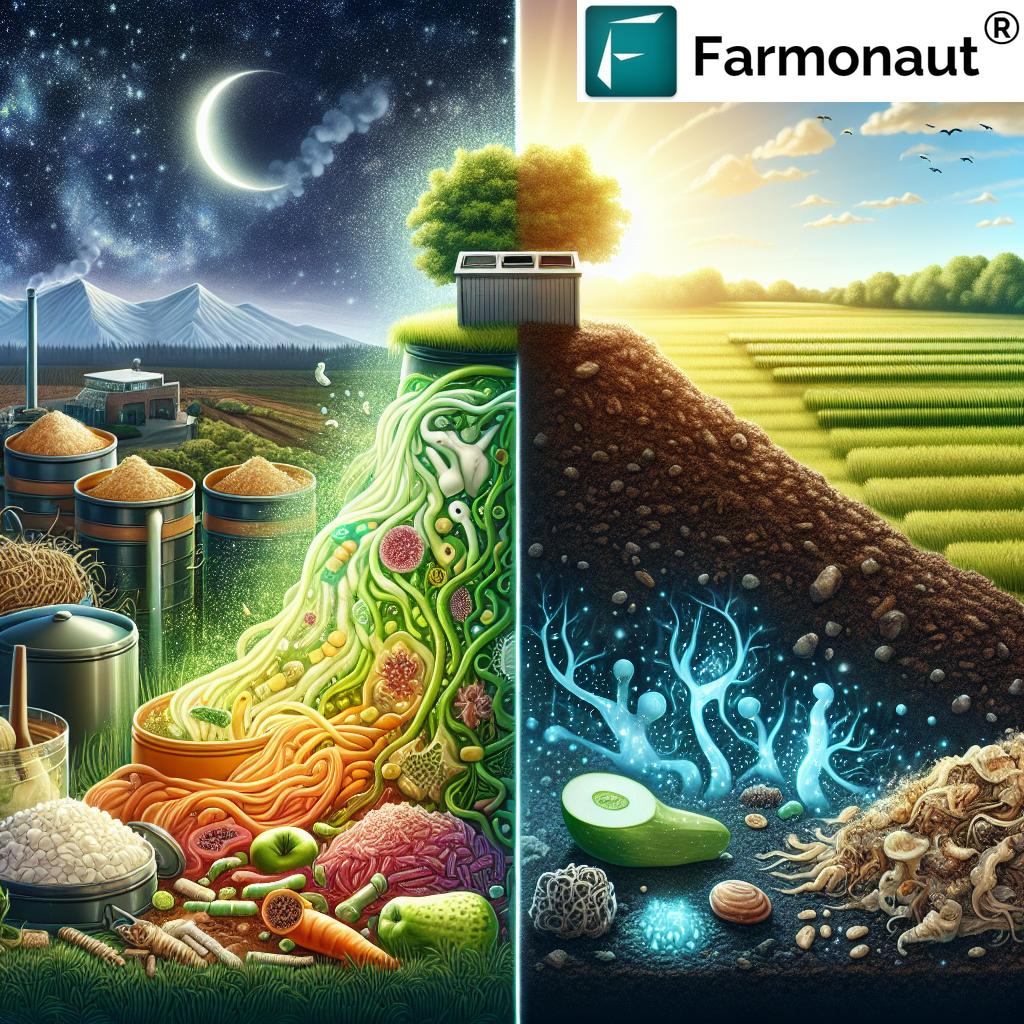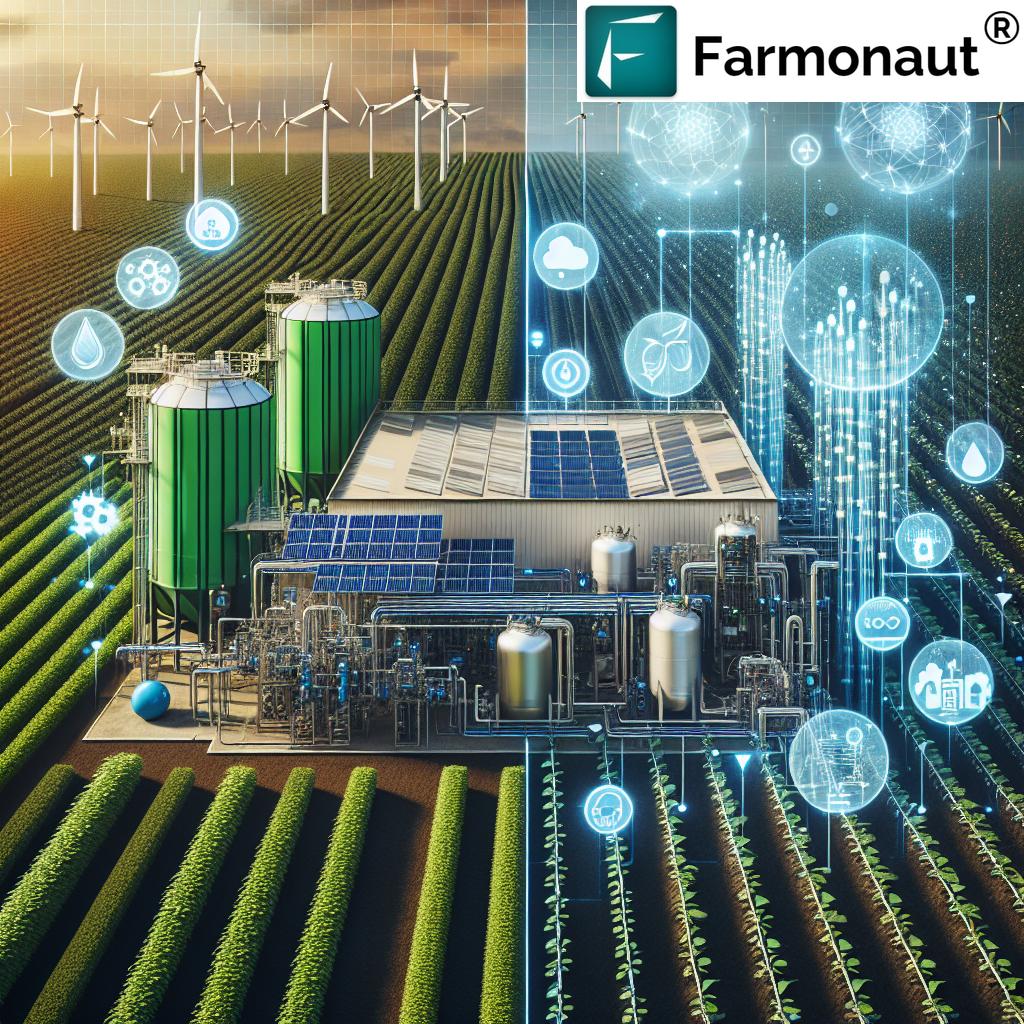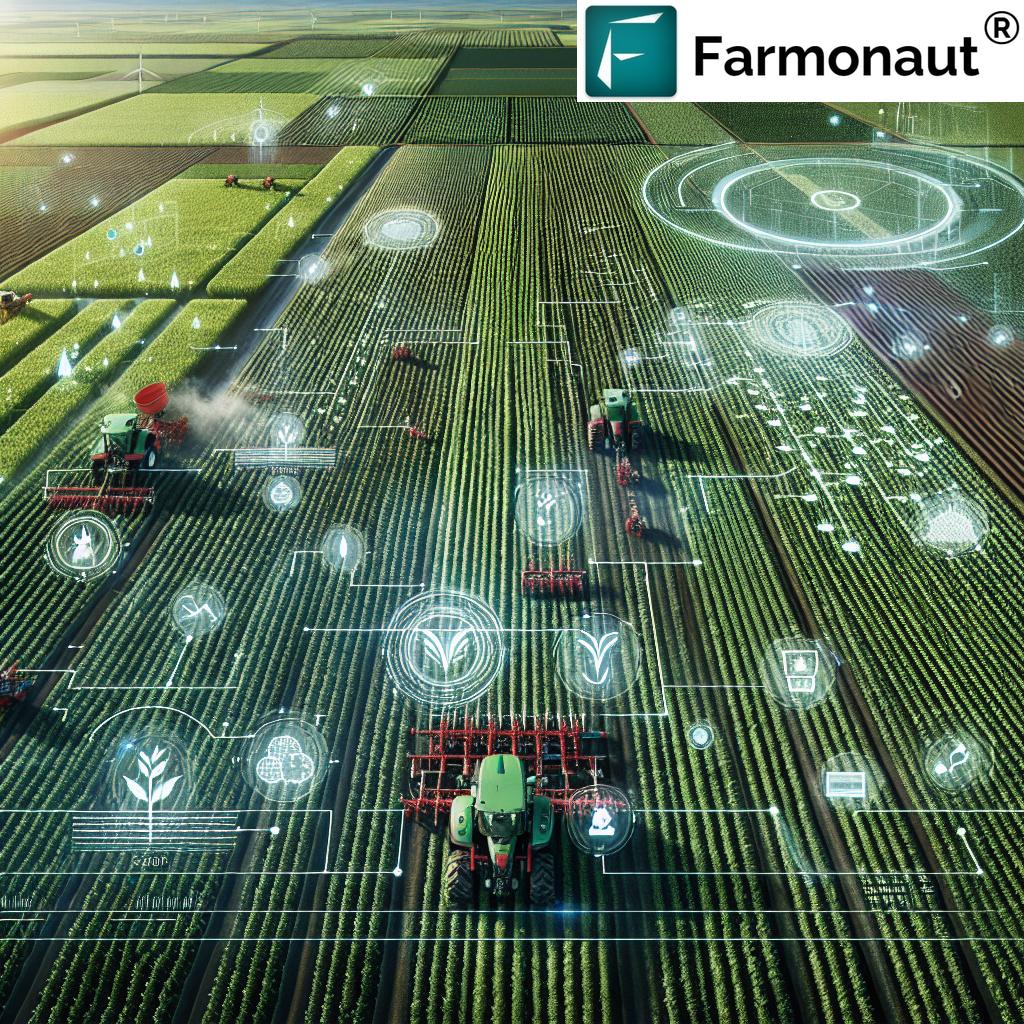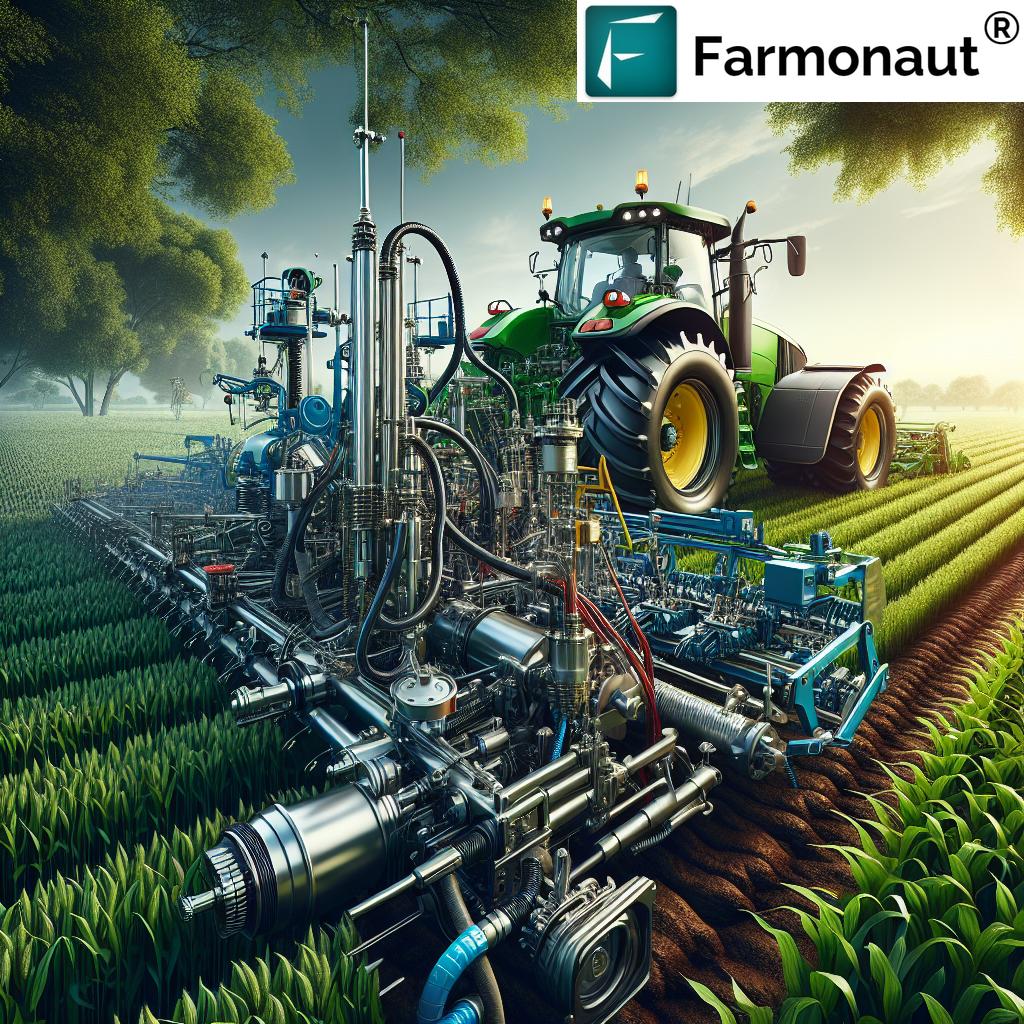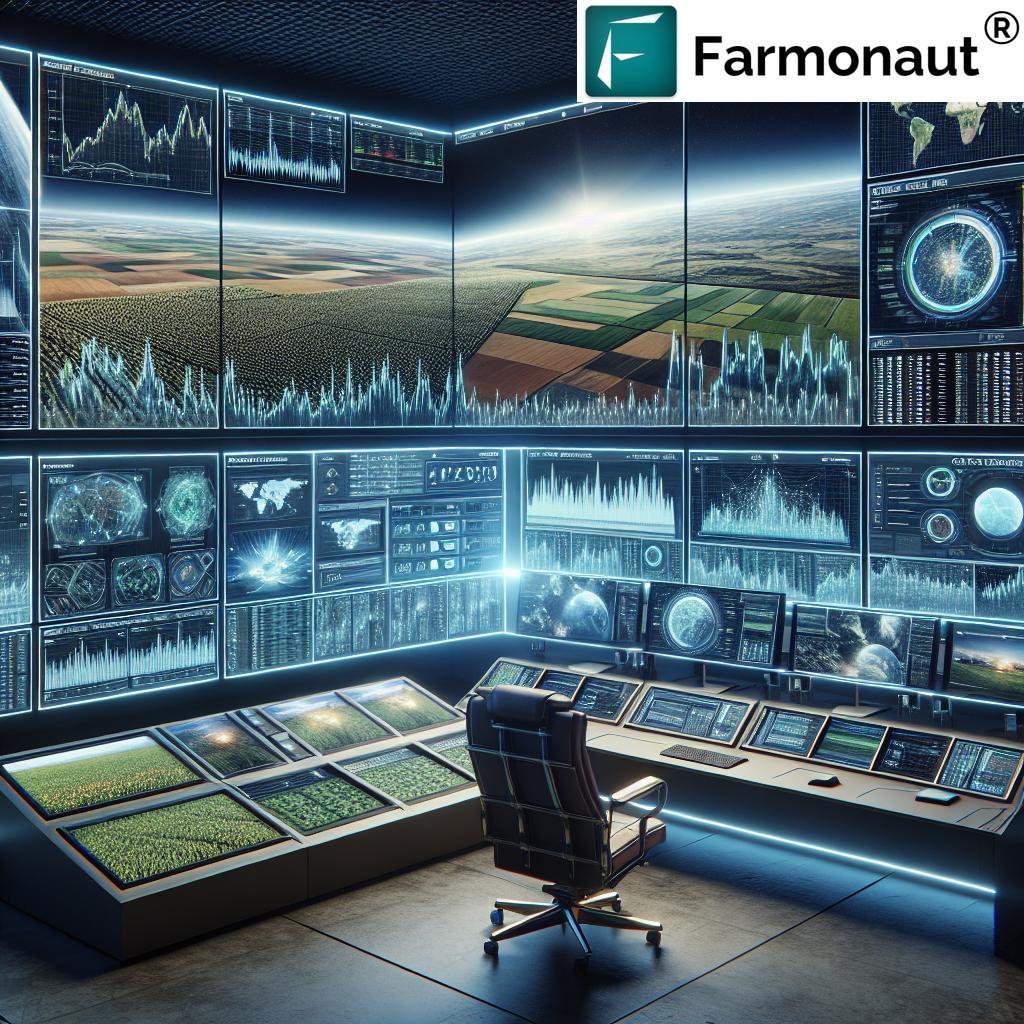Autonomous Robots in Agriculture: 7 Economic Impacts 2025
“By 2025, autonomous robots could increase agricultural productivity by up to 30%, transforming global food supply chains.”
“Adoption of autonomous robots may reduce farm labor costs by 20% by 2025, boosting economic resilience in agriculture.”
Table of Contents
- Introduction
- The Rise of Agriculture Autonomy: Setting the Stage for 2025
- 7 Economic Impacts of Autonomous Robots in Agriculture (2025)
- 1. Labor Cost Reduction
- 2. Yield Improvement & Food Security
- 3. Input Efficiency & Resource Conservation
- 4. Faster Field Operations & Enhanced Continuity
- 5. Error Minimization & Crop Loss Reduction
- 6. Access to New Markets & Economic Value Creation
- 7. Innovation, Employment Shift & Rural Economic Transformation
- Comparative Impact Analysis Table: Autonomous Robots & Economic Change by 2025
- Satellite Technology & Robotics: Farmonaut’s Role in Precision Agriculture and Economic Transformation
- Challenges & Barriers to Adoption of Autonomous Agricultural Robots
- Opportunities, Policy Directions & the Future of Agriculture Autonomy
- Key Farmonaut Products Empowering Agriculture Autonomy
- Farmonaut Subscriptions: Flexible, Scalable & Effective
- Frequently Asked Questions
- Conclusion
Introduction
The intersection of agriculture autonomy and advanced robotics is fundamentally reshaping the global economic landscape. As 2025 approaches, autonomous robots in agriculture are no longer a futuristic concept—they are a vital, rapidly expanding component fostering resilience, efficiency, and sustainability in farming. From the vast wheat belts of North America to the rice paddies of Asia and the orchards of Europe, autonomous robots are transforming the way we produce food, manage resources, and ensure economic stability.
This comprehensive guide explores how autonomous robots are catalyzing transformation at every stage of the agricultural value chain, the seven most critical economic impacts expected by 2025, and the role of Farmonaut in enabling this technological revolution through powerful, accessible satellite solutions.
The Rise of Agriculture Autonomy: Setting the Stage for 2025
What Is Agriculture Autonomy?
Agriculture autonomy refers to the use of automated systems, AI, and robotics in performing farming operations with minimal human intervention. As of 2025, autonomous robots in agriculture now include:
- Autonomous tractors and harvesters
- AI-powered drones for crop monitoring
- Robotic systems for seeding, planting, and precise irrigation
- Automated weed and pest control robots
- Soil analytics and sensor-driven input management
The integration of these autonomous technologies offers several direct economic benefits:
- Optimizing resource utilization
- Reducing labor dependency and costs
- Increasing yield quality and quantity
- Enhancing supply chain predictability
- Minimizing losses from pests, diseases, and adverse weather
The Critical Link Between Agriculture and Economy
The agriculture sector remains the backbone of many developing nations, employing a significant portion of the population. As economic pressures mount, especially amidst rising global food demands, labor shortages, and environmental constraints, integrating autonomous robots in agriculture becomes not just beneficial but essential for national GDP stability, poverty reduction, and inclusive growth. By converting manual processes to automated, data-driven operations, farms can increase productivity while lowering operational costs—a shift that translates directly to higher profit margins and stable economic contribution.
Why 2025 Is a Pivotal Year
By 2025, autonomous technologies are expected to accelerate rapidly due to:
- Advancements in AI, IoT, and machine learning
- Decreasing costs of robotic hardware and processing power
- Availability of real-time satellite and drone data for precision management
- Government incentives and agritech policies
- Increasing pressure for sustainable and traceable food production
Thus, the intersection of technology, regulatory frameworks, economic necessity, and sustainability goals marks 2025 as a watershed year for autonomous robots in agriculture and the broader agriculture in economy.
7 Economic Impacts of Autonomous Robots in Agriculture (2025)
1. Labor Cost Reduction: Automation’s Direct Economic Uplift
One of the most immediate and measurable economic impacts of autonomous robots in agriculture is labor cost reduction. In 2025, robots undertake repetitive, labor-intensive tasks—from seeding and weeding to harvesting—across diverse farm types.
Major impacts:
- Direct reduction of labor costs by at least 20–30% across major economies (per recent industry analyses), freeing up working capital for use in technology upgrades or expansion.
- Mitigating acute rural labor shortages seen across Europe, North America, and Asia, where farm labor forces are declining or becoming cost-prohibitive.
- Greater predictability and control over operational expenses, leading to more reliable long-term budgeting and planning for both smallholders and commercial farms.
Especially in regions facing demographic shifts—such as an aging rural population—the automation of routine farm work becomes vital to ensuring both continuity and economic resilience in the face of labor shortages and rising wage pressures.
2. Yield Improvement & Food Security: Boosting Productivity, Meeting Demands
Advances in autonomous robots agriculture mean machines now work tirelessly and with high precision, ensuring optimal planting, tending, and harvesting at every cycle. This leads to:
- Yield improvements of 10–30%—thanks to precise seed placement, controlled irrigation, and targeted fertilization.
- Consistent crop quality and reduced variability by compensating for labor fluctuations, varying field conditions, and unpredictable weather.
- A more robust food security foundation on both national and global scales, critical as population and food supply chain demands intensify in coming years.
Such gains help to stabilize agricultural output, reduce vulnerability to external shocks, and provide a critical buffer for both producers and consumers.
Farmonaut’s Data Advantage in Yield Optimization
By leveraging Farmonaut’s satellite-driven crop monitoring and API solutions, farmers gain real-time insights on crop health, maturity, and yield potential—empowering truly data-driven interventions at critical growth stages.
Curious how this works? Access Farmonaut’s Developer Docs or test our self-serve platform below:
3. Input Efficiency & Resource Conservation: Environmental and Economic Win
Modern autonomous robots in agriculture leverage AI, sensors, and precise data analytics to apply fertilizers, water, and pesticides exactly where needed. This results in:
- Input savings of 15–25% (fertilizers, pesticides, water)—critical for lowering costs and mitigating environmental damage.
- Reduced greenhouse gas emissions and chemical runoff, allowing producers to meet tightening sustainability and compliance mandates.
- Improved long-term soil health and resource utilization, reducing adverse impacts and securing farm profitability for future generations.
Our Farmonaut platform offers carbon footprinting and fleet management solutions. These empower farms and businesses to minimize operational resource waste, achieve sustainability certifications, and optimize logistics—all essential for competitiveness and compliance in 2025’s regulatory landscape.
4. Faster Field Operations & Enhanced Continuity: Meeting Growing Market Demands
Unlike human labor, autonomous machines operate tirelessly, 24/7 if needed. By 2025, this translates into:
- Shorter harvest and planting windows, allowing more flexible and rapid responses to adverse weather conditions or tight market cycles.
- Continuous, uninterrupted field operations even when human labor is unavailable—a crucial advantage in peak seasons.
- Increased annual field utilization, letting farms rotate or diversify crops more frequently for added profits and adaptability.
Speed and uninterrupted continuity mean perishable crops reach market faster, maximizing value and minimizing spoilage.
5. Error Minimization & Crop Loss Reduction: Enhancing Consistency and Output Quality
Manual errors—be it in planting depth, pesticide dosage, or timing—lead to substantial economic losses. Autonomous robots in agriculture address this by:
- Reducing errors by up to 70% versus traditional methods, thanks to precision robotics and AI-driven controls.
- Minimizing waste and maximizing crop survivability by adjusting dynamically for soil, weather, and pest conditions.
- Enabling predictable, data-backed quality assurance, useful for traceability, food safety, and premium market access.
Farmers who leverage Farmonaut’s blockchain-based traceability benefit from transparent supply chains—boosting trust, reducing fraud, and ensuring true farm-to-table accountability.
6. Access to New Markets & Economic Value Creation: Beyond the Farm Gate
With verifiable data and efficient operations, farms using agriculture autonomy can:
- Comply with global trade standards requiring environmental reporting, residue controls, and batch traceability.
- Earn premium pricing for sustainable, certified, or traceable products.
- Tap into opportunities in carbon trading, insurance discounts, and sustainability-linked financing.
- Drive innovation in rural economies via tech-enabled services and know-how sharing.
Farmonaut provides powerful digital tools that help banks and insurance providers streamline loan and insurance approvals through satellite-based crop verification, cutting fraud and making financing more accessible for progressive producers.
7. Innovation, Employment Shift & Rural Economic Transformation
As robots automate traditional farming, labor demand shifts toward:
- Technology maintenance, programming, and data analytics
- Agri-entrepreneurship and value-added advisory or integration roles
- Specialized training for next-gen farm managers
Consequently, while some manual jobs may decrease, new employment opportunities arise in agritech, robotics stewardship, analytics, and sustainable agriculture services. This fosters a more educated, digitally savvy rural workforce and enhances broader economic development.
Comparative Impact Analysis Table: Autonomous Robots & Economic Change by 2025
| Economic Impact Area | Description | Sector Affected | Estimated Value/Percentage (2025) | Projected Change vs. 2020 |
|---|---|---|---|---|
| Labor Cost Reduction | Lower total labor spend via automation of repetitive/manual tasks | Crop, Horticulture, Livestock | -20% to -30% labor costs | +15% to +22% reduction from 2020 |
| Yield Improvement | More precise planting, growing, and harvesting techniques raise output | Crop farming, Horticulture | +10% to +30% yield increase | +7% to +22% vs. 2020 |
| Input Efficiency | Fertilizer, pesticide, water usage optimized by sensors/AI | Crop farming, Horticulture | -15% to -25% input use | +10% to +23% improvement |
| Resource Conservation | Lowered chemical runoff, better soil health, reduced water loss | All sectors | -18% runoff/emissions | +12% vs. 2020 |
| Operational Speed | Field work performed quicker, increasing cycles per season | Crop, Horticulture | +22% faster ops | +14% vs. 2020 |
| Error Minimization | Reduced planting, chemical, and harvest mistakes | Crop, Livestock | -70% operational errors | +40% improvement vs. 2020 |
| Market Value Increase | Higher quality, traceable, and certified products fetch premiums | All sectors | +8–20% market price | +7% vs. 2020 |
Satellite Technology & Robotics: Farmonaut’s Role in Precision Agriculture and Economic Transformation
The game-changer for agriculture autonomy is the union of satellite technology, AI, and robotics. At Farmonaut, our mission is to make satellite-driven insights affordable and accessible for farmers, agribusinesses, and governments globally via web, mobile, and API platforms.
- Satellite-Based Crop Health Monitoring: Our multispectral imagery supports decision-making by analyzing NDVI, soil, and moisture indices, ensuring optimal timing for planting, irrigating, harvesting, and protecting crops. Learn about large-scale farm management tools.
- AI Advisory (Jeevn AI): Real-time strategies, field-specific weather, and early warning systems reduce risk and improve management at every operational stage. Explore crop and forest advisory solutions.
- Blockchain Traceability: Provides full transparency across production and logistics, helping producers meet certification and compliance requirements. Read more about traceability benefits.
- Environmental Monitoring: Enable tracking of emissions and carbon footprint, crucial for sustainability labeling and market competitiveness.
Try Farmonaut in your workflow:


Challenges & Barriers to Adoption of Autonomous Agricultural Robots
Despite considerable economic and sustainability benefits, wide-scale adoption of autonomous robots agriculture faces these major barriers:
- High capital costs for initial deployment and maintenance of robots, limiting adoption for smallholder farms
- Digital literacy and training gaps in rural populations
- Lack of inclusive financing models and cooperative ownership frameworks
- Concerns about data privacy, sovereignty, and security when using AI and IoT-enabled machinery
- Sparse connectivity infrastructure in remote areas, inhibiting real-time data transfer
Overcoming these requires inclusive frameworks, government support, and education programs to ensure all farmers benefit from the technology-driven transformation of the sector.
Opportunities, Policy Directions & the Future of Agriculture Autonomy
- Policy incentives: Subsidies, R&D grants, and tax breaks for autonomous tech and systems can accelerate widespread adoption.
- Cooperative models: Group ownership of robots and pooled data resources help democratize access to smallholders.
- Digital extension services: Combining in-field robotics with real-time satellite analytics (such as Farmonaut’s Jeevn AI) enables remote farm management and timely interventions.
- Market-driven sustainability: Mandatory sustainability certifications and traceability will force alignment, benefiting early adopters with technological and regulatory preparedness.
- Continuous upskilling: Training programs for both farmers and rural youth ensure a future-ready agriculture workforce, reducing the risks of displacement and fostering broader economic value creation.
Key Farmonaut Products Empowering Agriculture Autonomy
Farmonaut’s suite offers a modular approach to satellite-driven, autonomous, and data-rich agriculture:
-
Environmental Impact & Carbon Footprinting:
Measure the carbon footprint of agricultural processes to comply with environmental regulations and unlock eco-premium export markets.
Discover carbon monitoring tools -
Blockchain Traceability:
Enhance transparency and consumer trust through immutable records for every input and output along the agriculture supply chain.
Traceability Product Page -
Crop Loan and Insurance:
Reduce insurance fraud and accelerate financing with satellite-based verification, improving inclusivity and financial security for farmers.
See loan/insurance verification solutions -
Fleet Management:
Optimize machinery usage, save fuel, and cut logistical costs with real-time satellite and AI-powered tracking.
Fleet management benefits -
Large Scale Farm Management:
Satellite-based monitoring and analytics for enterprises and governments to supervise vast areas with ease.
Agro-admin App details -
Crop & Plantation, Forest Advisory:
Leverage AI-driven advisories for proactive intervention and resource optimization.
Crop & Forest advisory access
Farmonaut Subscriptions: Flexible, Scalable & Effective
Whether you’re an individual farmer, business, corporate entity, or government agency, our subscription options are tailored to meet your specific need for real-time agricultural monitoring and resource management. Enjoy access via Android, iOS, or web, and scale your plan as your operations grow.
Frequently Asked Questions – Autonomous Robots in Agriculture 2025
1. What are the main advantages of autonomous robots in agriculture for 2025?
Key advantages include reduced labor costs, increased operational efficiency, higher and more consistent yields, improved input efficiency, compliance with sustainability standards, and stronger resilience to market and climate disruptions.
2. How do autonomous agricultural robots impact global food security?
By boosting productivity and ensuring consistent, high-quality yields, autonomous robots help stabilize food supply chains, reduce spoilage, and enable more precise responses to global food supply and demand fluctuations—directly enhancing food security.
3. What types of tasks are automated by agricultural robotics?
Automation covers planting, seeding, fertilization, pesticide application, crop monitoring, irrigation controls, harvesting, logistics, and supply chain traceability.
4. What is precision agriculture, and how do robots enable it?
Precision agriculture uses advanced tech like AI, sensors, drones, and satellites to monitor and manage farming at a micro level. Robots use real-time data to optimize every variable—soil moisture, nutrient levels, pest pressures—maximizing output and minimizing waste or environmental harm.
5. How does Farmonaut contribute to autonomous agriculture?
We at Farmonaut provide cost-effective satellite-based monitoring, AI advisories, blockchain traceability, and fleet management tools, making advanced agriculture autonomy accessible globally via our easy-to-use apps and APIs. Our platform empowers farmers, businesses, and governments to increase productivity, manage resources optimally, and achieve compliance while advancing sustainability.
6. What barriers remain for adoption of robots in farming?
Major challenges include high upfront costs, digital skill gaps, limited rural connectivity, data privacy concerns, and the need for inclusive financing models. Policy support and education programs are key to overcoming these barriers.
7. Are autonomous robots only for large commercial farms?
No. While initial adoption is often higher among large or well-capitalized farms, affordable subscription services, cooperative models, and government incentives are making agriculture autonomy accessible to smallholders. Platforms like Farmonaut help level the playing field.
Conclusion
In summary, the widespread integration of autonomous robots in agriculture by 2025 marks a transformative step for the global economy. From reducing labor dependency and optimizing input usage to improving yield consistency and supporting rural innovation, autonomous technologies redefine agriculture in economy. While challenges remain, the economic significance of these technologies cannot be overstated—increasing national GDP, stabilizing food systems, and ensuring environmental sustainability are all in reach.
Through inclusive adoption strategies, robust regulatory frameworks, and continuous technological advancement, autonomous robotics in agriculture will continue to shape a resilient, efficient, and sustainable future. We at Farmonaut are proud to support this evolution, making cutting-edge satellite technology, AI, and analytics tools available to all sectors, from the smallest rural producer to national agricultural ministries.
Explore our platform to start your journey toward autonomous, data-driven agriculture today.
For API integration or data-driven excellence, visit our API portal or developer documentation.
Join the agricultural revolution. Build economic resilience. Ensure a sustainable food future—with Farmonaut and agriculture autonomy.



